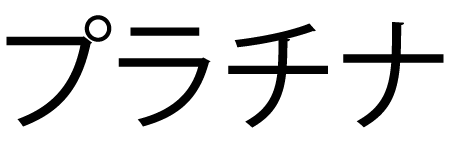Platinum Clear Fountain Pen c. 1952-1955
by Jim Mamoulides, June 14, 2024
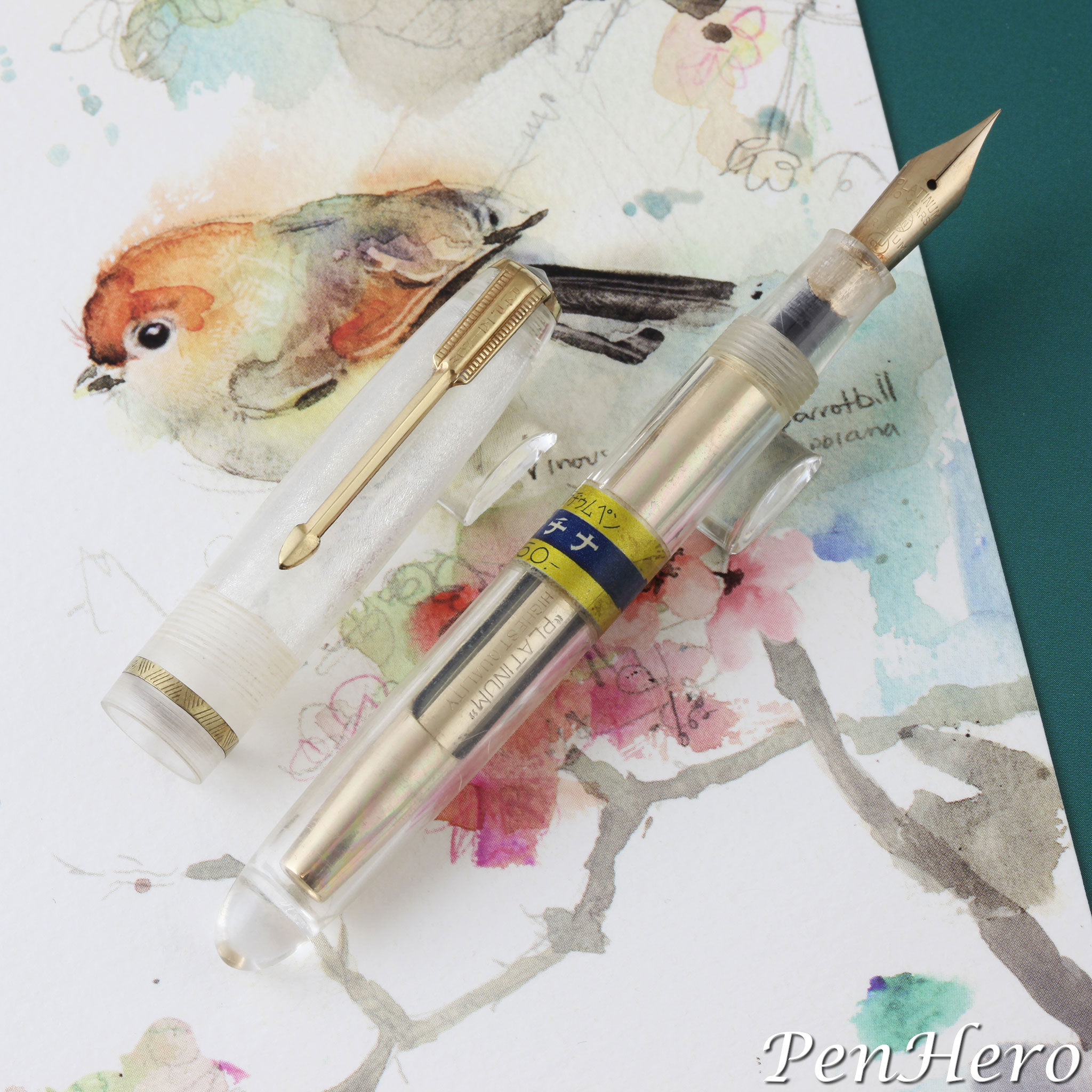 Platinum clear fountain pen c. 1952-1955
Platinum clear fountain pen c. 1952-1955
A Clear Case
The demonstrator pen craze probably started in 1993 with the release of the Pelikan M800 Blue Ocean limited edition. Over the next thirty years demonstrator style pens gradually went from expensive limited and special edition pens to becoming part of regular production runs for several pen companies. These pens aren’t demonstrators in the strict sense. Demonstrators were originally made by pen manufacturers for salespeople to show a newly released design, feed, filling system, or pencil mechanism and demonstrate how it worked. Not only was clear plastic or celluloid used to reveal the inner workings, but some demonstrators had cutaway sections for this purpose. For clarity, I’m going to call these original purpose instruments “sales demonstrators.”
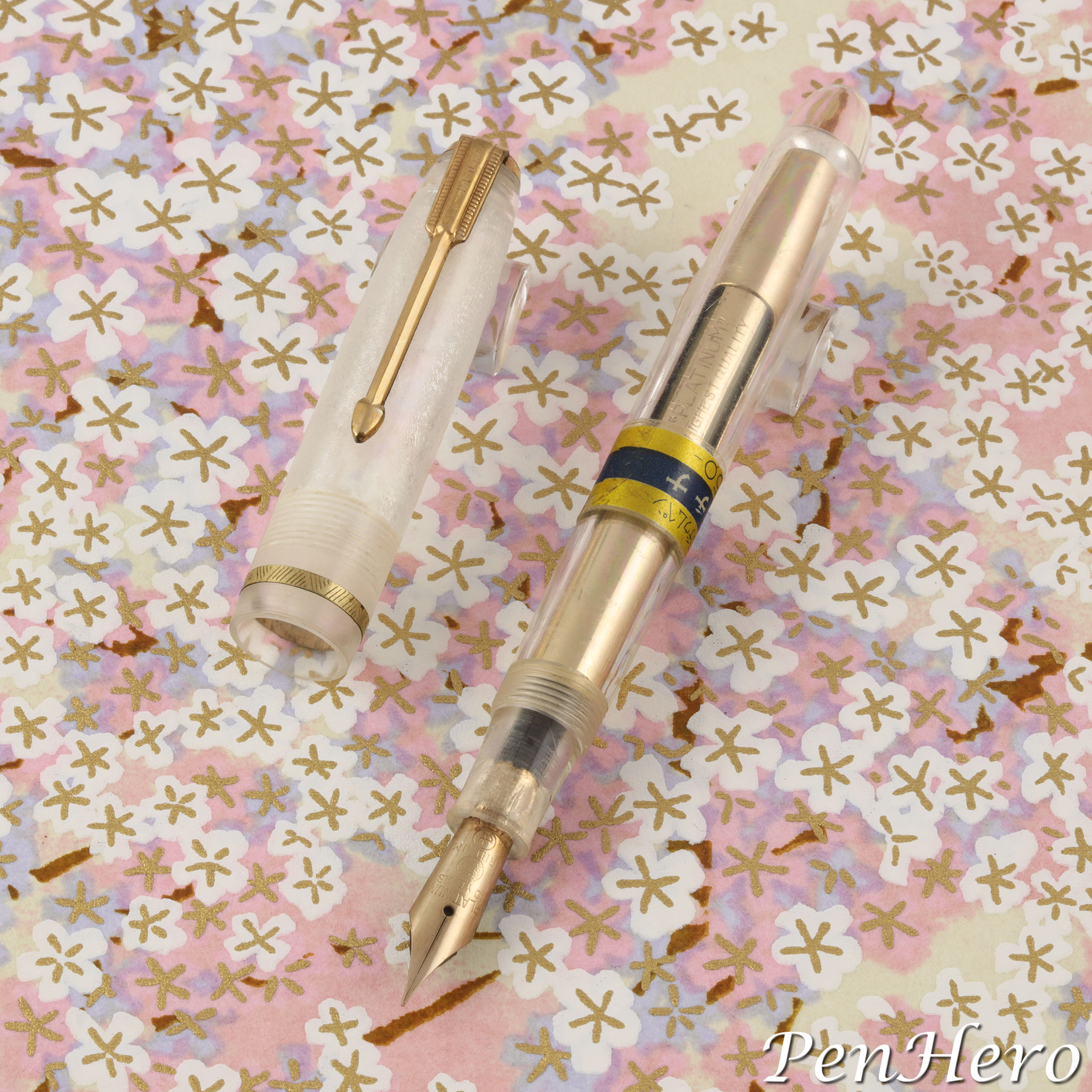 Platinum clear fountain pen c. 1952-1955
Platinum clear fountain pen c. 1952-1955
Ink visible pens, with large, clear barrel sections, were made going as far back as the 1920s. Many were plunger and bulb filler types where a large filling capacity and being able to see it were selling points. Most did not reveal the inner workings of the filling mechanism or the feed. Some ink visible pen sections showed some of the feed, but most did not. Ink visible pens are still made today.
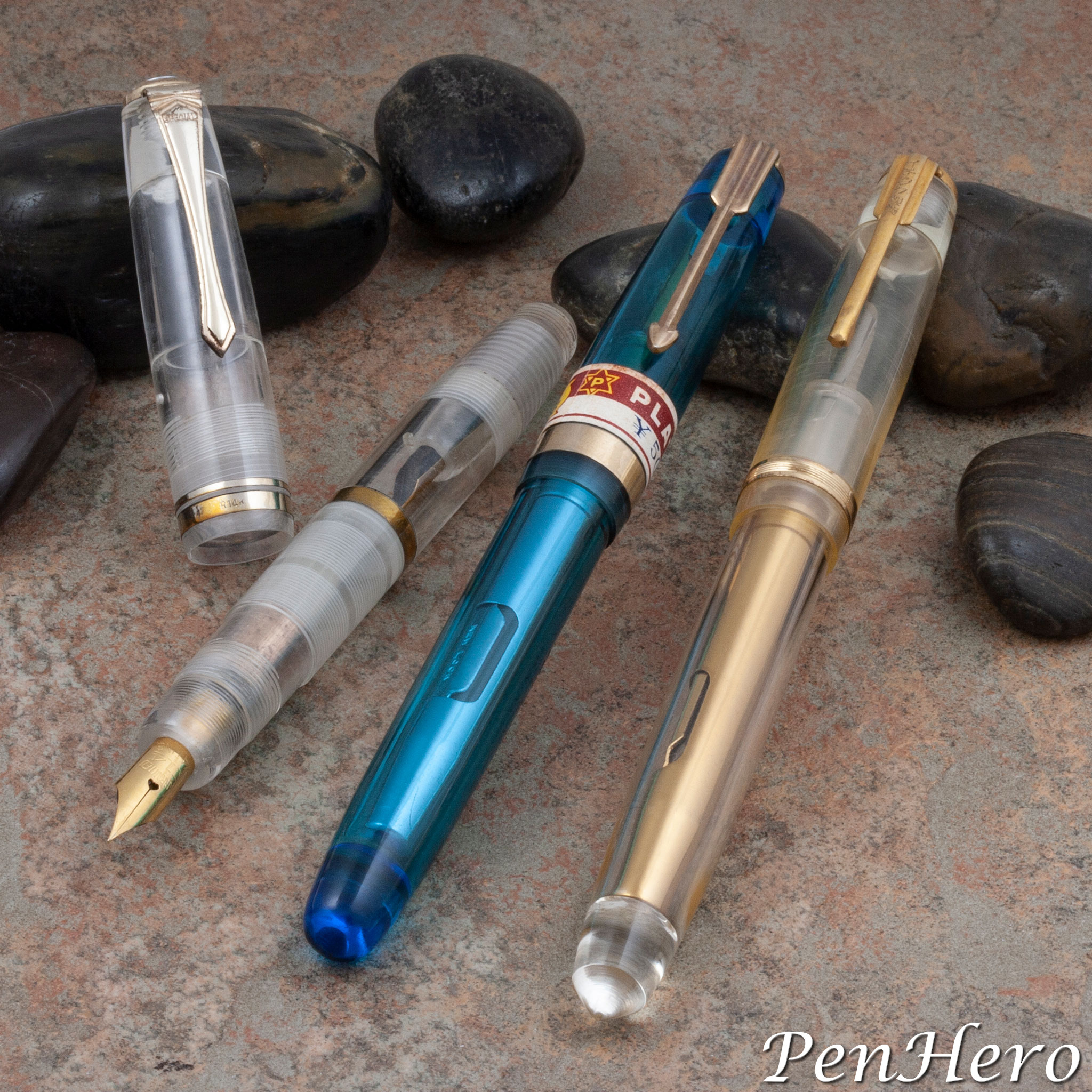 Clear plastic pens c. 1953-1956: unknown maker, blue Platon, and Ichijiku
Clear plastic pens c. 1953-1956: unknown maker, blue Platon, and Ichijiku
Injection molded plastics became available and used for making pens starting in the mid 1940s. Over time many colors were put into production, but few clear plastic pens were offered in the United States, Canada, or Europe other than sales demonstrators. In the 1950s, Japanese pen makers began to make clear and translucent regular production pens and sales demonstrators using the new plastic. Many, if not most regular production examples that I have seen are lower end models, and most of those are from now unknown pen makers. Clear and transparent Japanese pens from the 1950s can be found in colorless clear plastic, like this Platinum, as well as blue, red, and pink, if not more colors, some with painted designs, and some etched or engraved.
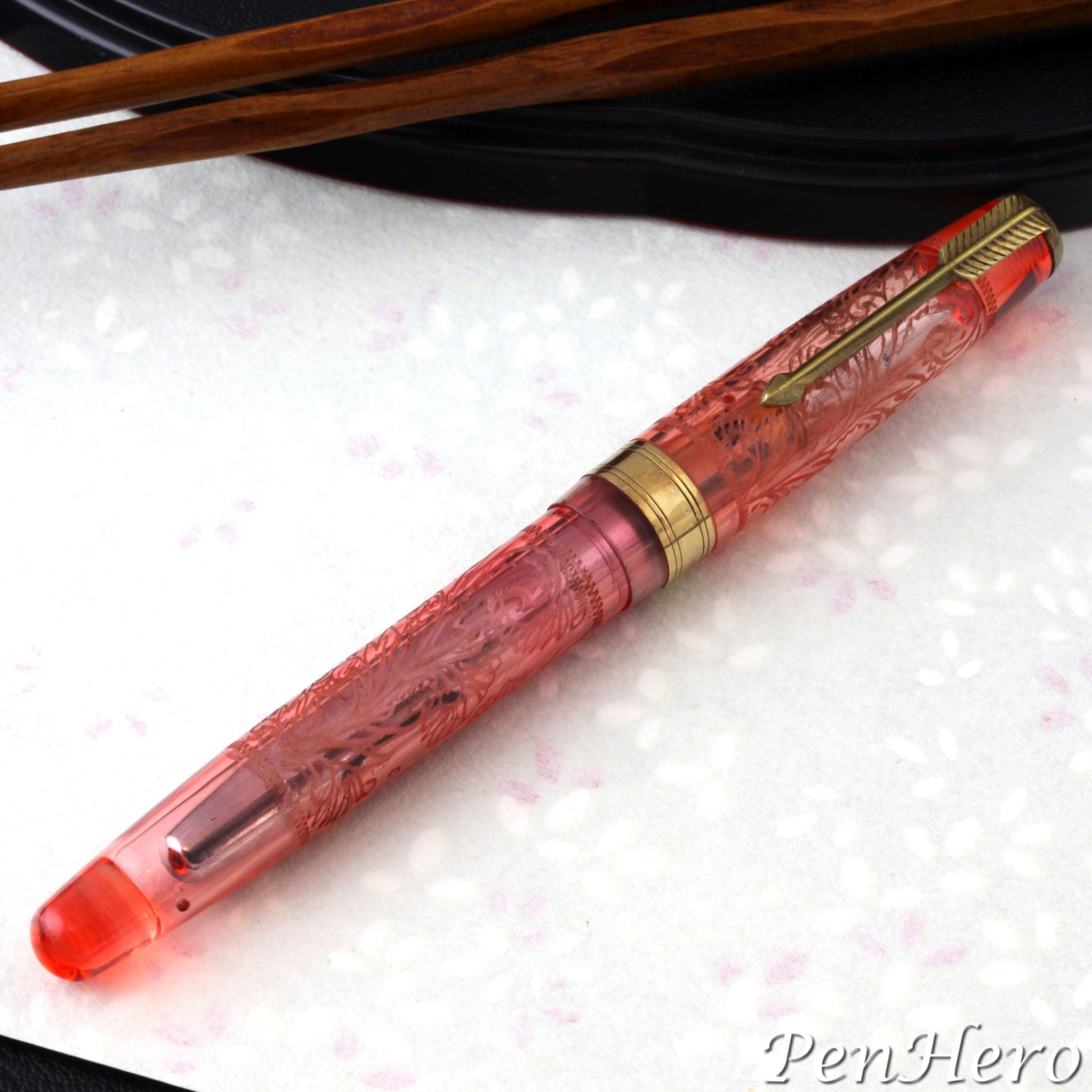 Clear hand engraved pen with Morison nib, c. 1953-1956
Clear hand engraved pen with Morison nib, c. 1953-1956
This c. 1952-1955 Platinum squeeze filler fountain pen, in the photo below, has a clear plastic cap and barrel and a price band, indicating it was a production pen, not a sales demonstrator. The paper band shows a price of 550 yen, about $5.00 in today’s dollars. It reads "Gold plated Platinum pen" over "Platinum" over ¥550. This 4 7/8 inch long model would date from at least 1951 when nibs were marked with the Japanese Industrial Standards mark. The clip is stamped R14 at the top, indicating 14 karat rolled gold, above the name PLATINUM. The gold plated steel nib is stamped PLATINUM over 10 YEAR over IRIDIUM over the JIS symbol. The JIS number is unreadable in the section. This arrow clip style, with PLATINUM stamped down the top, is seen on pens dated as early as 1950. The cap and nib section unfortunately shows a lot of crazing, a condition where the plastic suffers areas of fine hairline cracks.
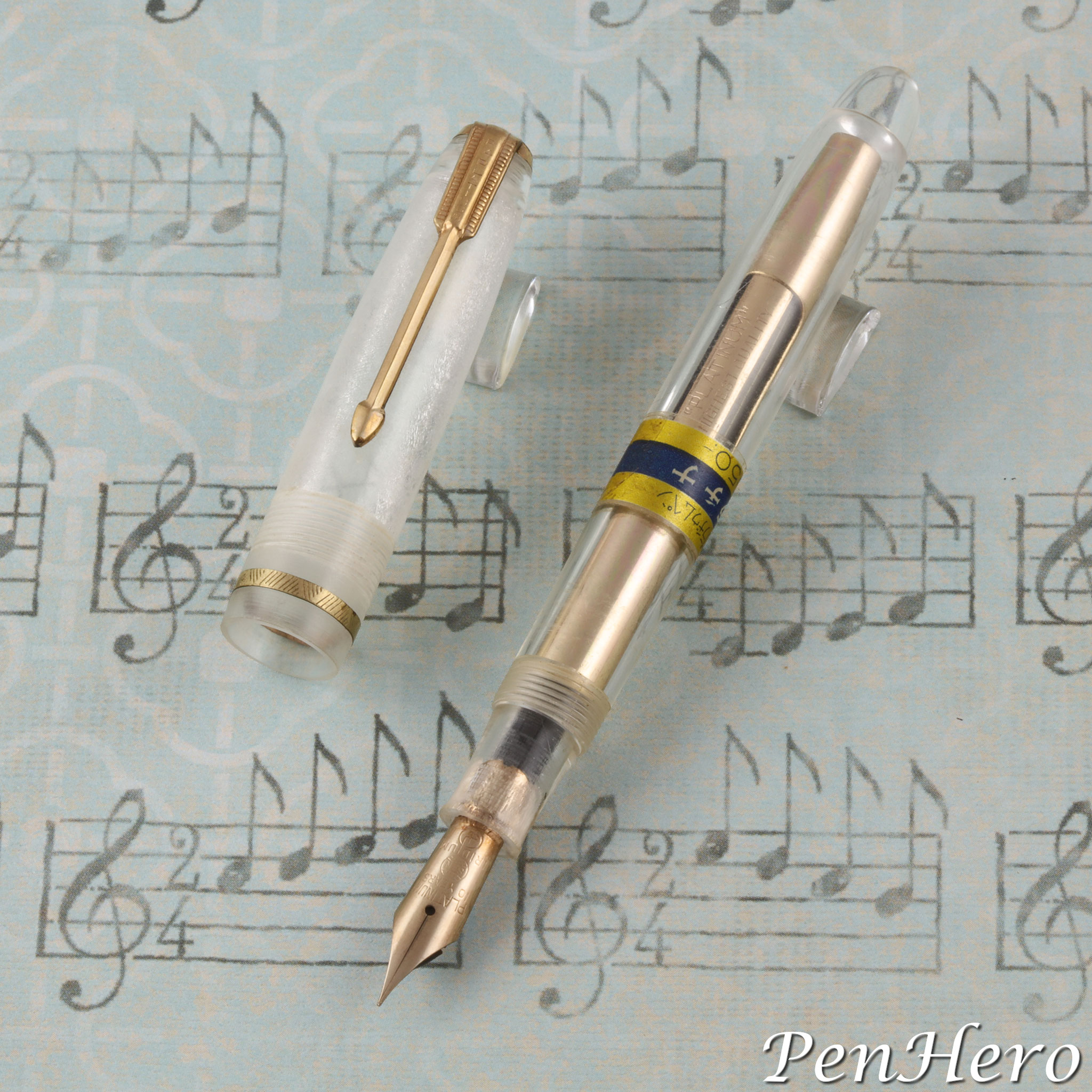 Platinum clear fountain pen c. 1952-1955
Platinum clear fountain pen c. 1952-1955
According to Fountain Pens of Japan Platinum introduced the ten-year durable nib, shown below, in 1952. The Japan Industrial Standard (JIS) marking for fountain pen nibs was instituted in 1951 and gold nibs intended for export were required to have the JIS mark in 1952. Gold nibs intended for domestic sale were required to have the JIS mark in 1953. Nibs are stamped with the JIS mark and a four digit number indicating the maker. The JIS nib number is impossible to read and the section is too fragile to remove it, but it is undoubtedly 3250, the number reserved for Platinum Mannenhitsu (fountain pen), identifying the company name, and Syun-ichi Nakata, named for founder of Platinum Pen, and the number includes the brand names Platinum and President, Platinum’s export brand, according to the list of JIS numbers in Fountain Pens of Japan.
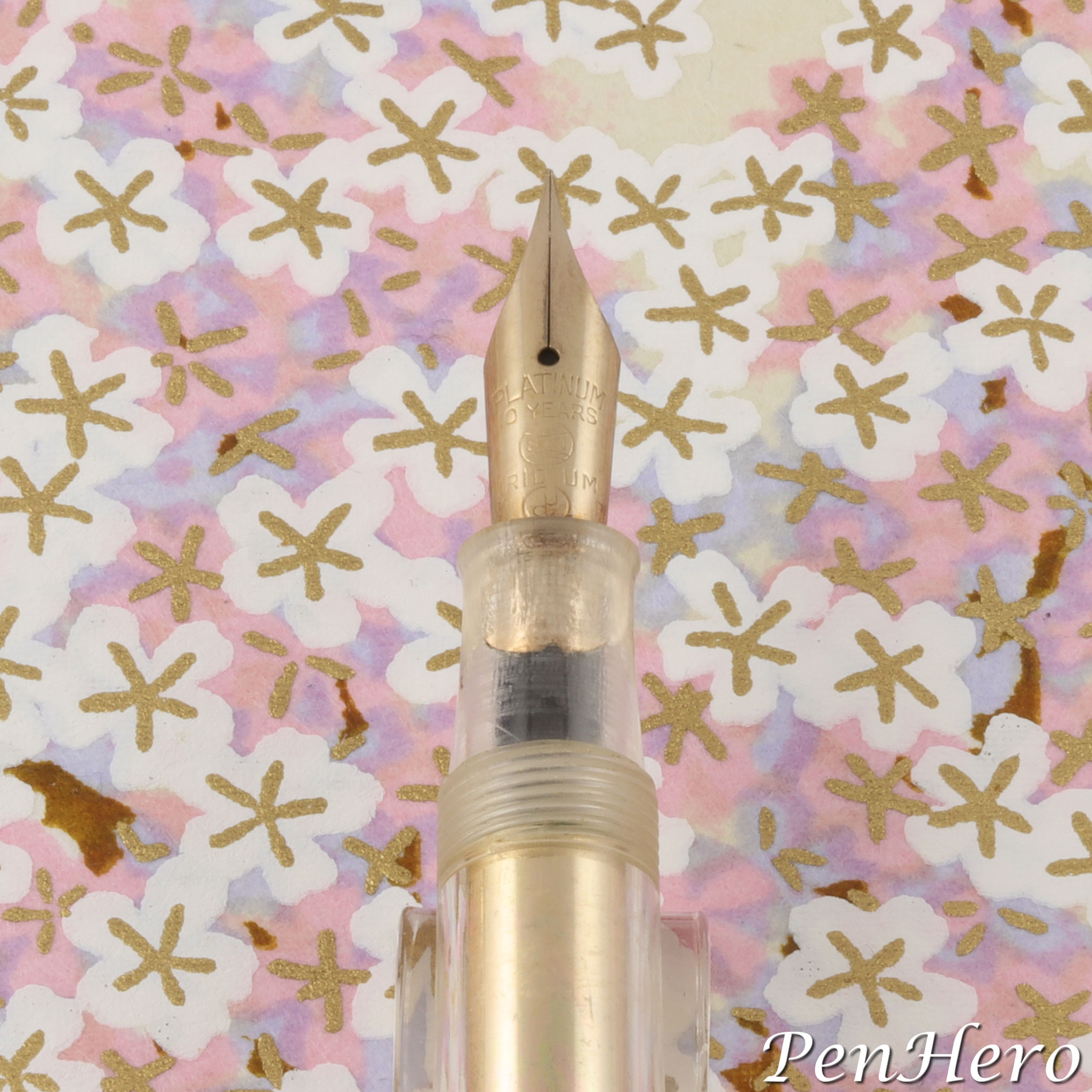 Platinum clear fountain pen c. 1952-1955, nib detail
Platinum clear fountain pen c. 1952-1955, nib detail
The squeeze type filler, possibly an aerometric type (which would require a feed tube), also dates the pen to the 1950s, with Platinum following the lead of the filler design in the Parker 51 Aerometric. The squeeze filler unit has “PLATINUM” over HIGHEST QUALITY stamped on the press bar.
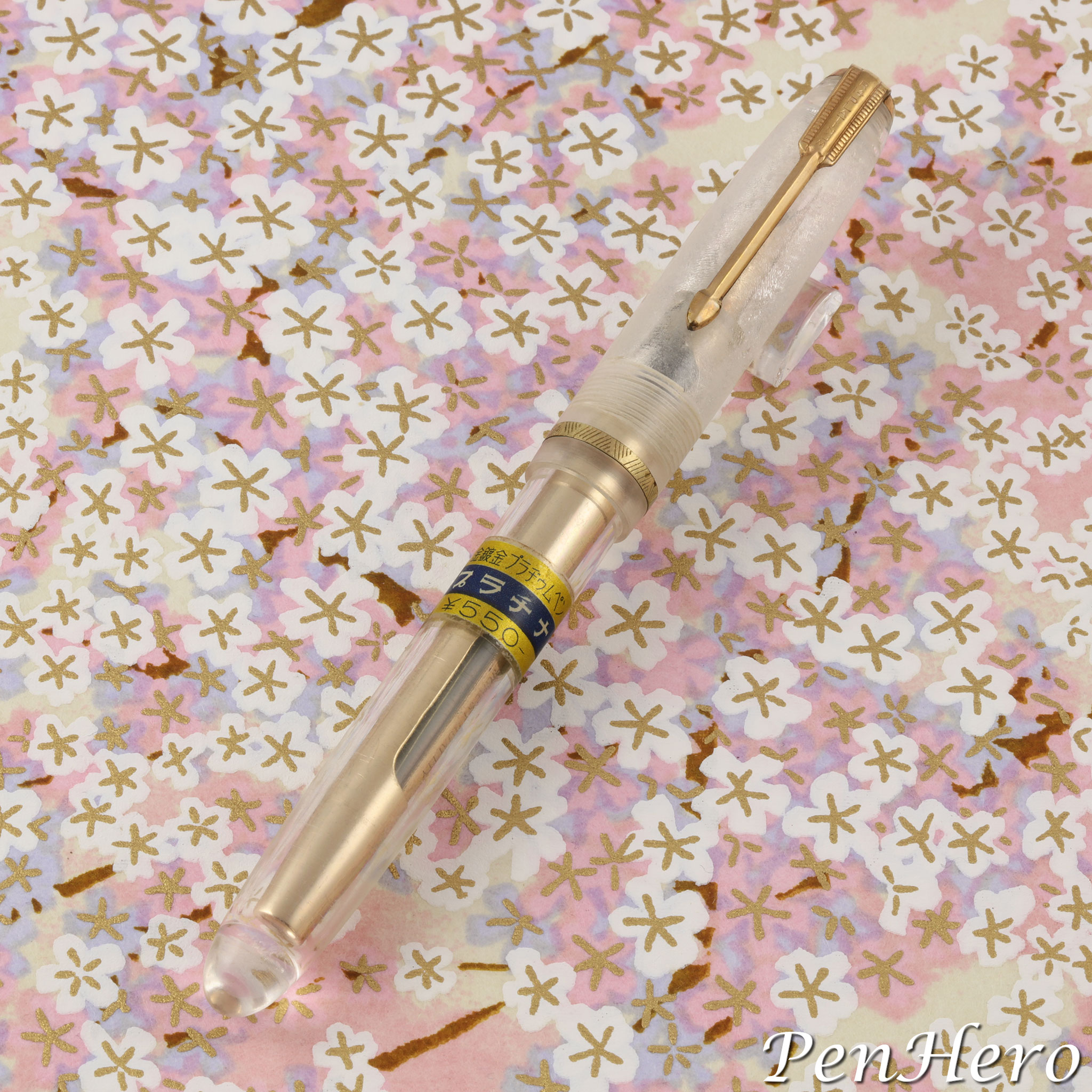 Platinum clear fountain pen c. 1952-1955
Platinum clear fountain pen c. 1952-1955
Many clear plastic pens were made in Japan in the 1950s. They come in a variety of colors, simple hand painted designs, and engraved or etched designs. Pens with painted caps and barrels are often done in a simple free style that looks like only a small amount of work was done on the decoration. The etched or engraved designs can be quite elaborate and appear to be done by a machine. A lot of them are Parker knockoffs.
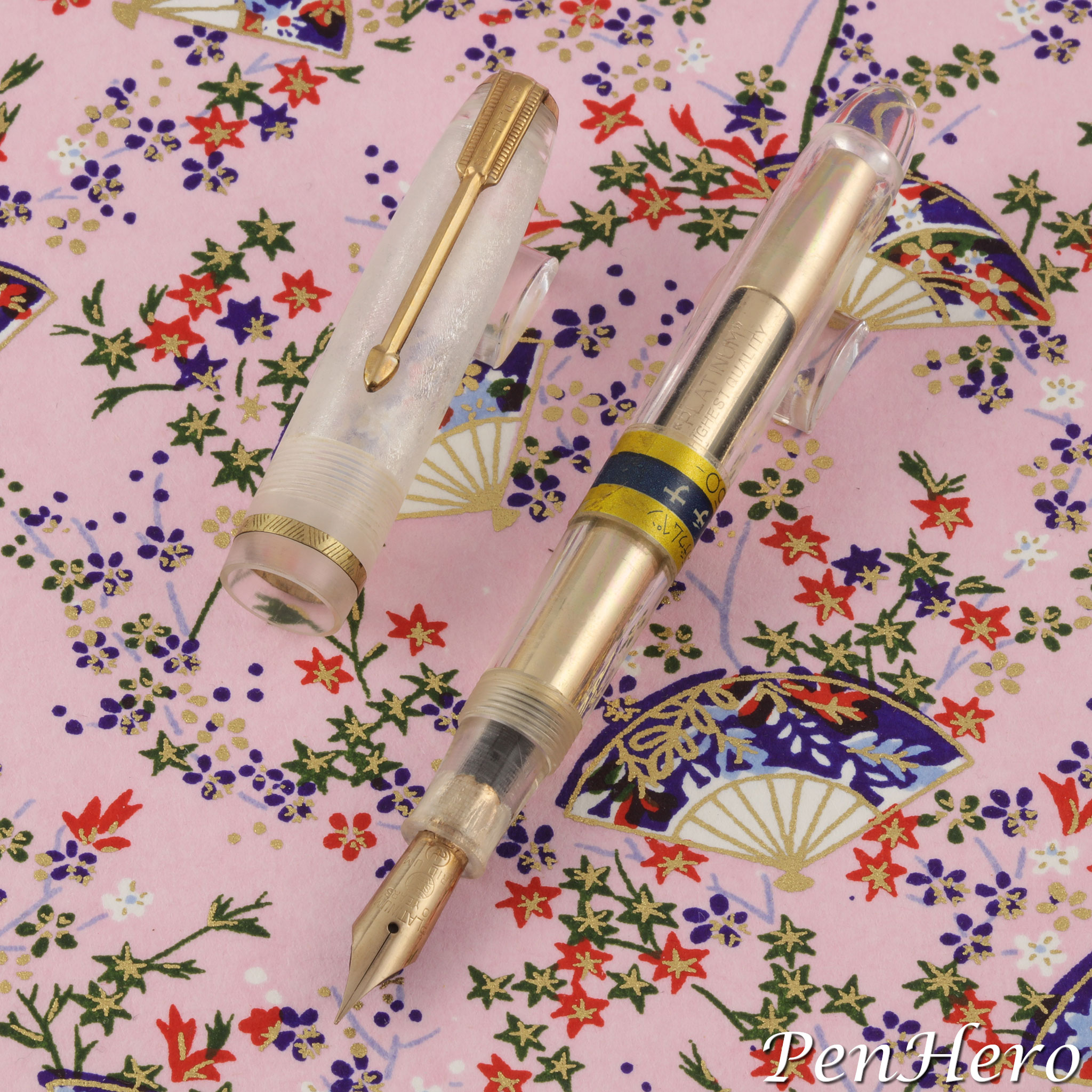 Platinum clear fountain pen c. 1952-1955
Platinum clear fountain pen c. 1952-1955
In spite of the deterioration of the plastic, this pen would make a nice addition to a 1950s Platinum collection. Most of the unbranded plain and painted pens I've seen can be found for low prices and are often in good to fair condition, usually not working, and typically with plating loss on the trim. The etched or engraved pens tend to be more expensive. They are all fun to collect and won’t break the budget!
References
“Collecting Japanese Pens” by Stan Klemanowicz, The Pennant, Winter 2006, published by the Pen Collectors of America
Fountain Pens of Japan by Andreas Lambrou and Masamichi Sunami, © 2012 Andreas Lambrou Publishers, Epping, Essex, United Kingdom, pages 28, 290-315
Interact
Comments on this article may be sent to the author, Jim Mamoulides


